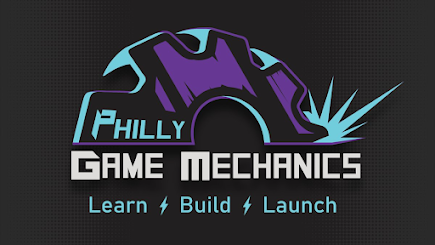Mastering 3D Art in Games: From Concept to Implementation
Introduction
3D art in-game is not just all about creating beautiful visuals, but also about the immersive world which tells compelling stories and captivates players. From the first sketch on digital canvas to the final asset in a game engine, the 3D art journey is a mix of technical knowledge, creativity, and collaboration. Today’s games rely heavily on high-quality 3D design to provide experiences that feel alive and interactive. Whether you're building your first project or working on large-scale production, understanding how to turn artistic ideas into payable assets is important. In this post, we will show you how to Master 3D Art from concept to implementation by focusing on how to stay creative, consistent, and efficient throughout the process.
Building the Right 3D Art Team
The production of high-quality 3D art demands specialized personnel who possess individual talents that complement one another. Concept artists initiate the project by generating character designs, environmental sketches and digital illustrations besides drawing props and establishing a mood ambiance. The initial design phase sets the foundation for computer modelers to implement these plans while using software applications such as Blender or Maya.
After model creation, texture artists bring realism by embedding surface properties with color maps and bump maps as well as other detailed enhancements. Animators implement animated models through skeleton structures from rigging artists before adding animated motion to the created software-based designs. Technical artists finalize game engine compatibility by optimizing game assets within Unity or Unreal while maintaining visual quality standards.
Whether You should decide between working with a complete internal team or hiring an external team success requires excellent teamwork and exceptional communication. Having internal art teams provides stronger team connections together with expedited information sharing but contracting external professionals provides better adaptability, particularly when projects need quick completion, or your funding resources are limited.
Understanding the Vision behind 3D Game Art
A 3D project succeeds only when it starts with a cohesive artistic vision. As a crucial initial phase, the game receives its visual narratives, style, and tone. The art team must understand the target audience and the platform alongside the genre before starting modeling or texturing. The visual standards of a stylized fantasy game differ substantially from what players anticipate in a game made for high-end consoles. Game developers make creative choices that define both games' visual appearance and complexity of the 3D model complexity and the level of detail required.
The selection of the right 3D Design approaches between photorealistic and low poly depends on technical factors that influence performance as well as rendering capabilities. It is vital to confirm that the art direction matches both the used game engine and the desired game experience. Keeping artistic goals clear from the outset supports both avoiding costly revisions and increasing production.
From Sketch to Screen: The 3D Art
The structured art determines the actual creation of ready-to-use 3D assets for games. The sequence starts with concept art where visual ideas are approved and sketched. The drawing concepts guide all North Star for the entire production process. 3D artists shape character and environmental element sculpting through high and low-poly techniques that let them meet style needs along with performance needs.
Texturing follows modeling allowing flat models to acquire life-like qualities. Artists apply lighting, color, and material details to stylize and mimic as needed. Then comes Rigging represents the hidden framework that provides models the freedom of movement. Synchronization during the rigging phase should be specific for characters since their movement mechanics decide their performance quality. Animators then add motion- jumping, fighting, running which bring static meshes into dynamic action.
Asset integration occurs as the final stage of the game engine. This step ensures proper texture compression, meshes are optimized and lighting settings are calibrated. Even the most beautiful asset won't succeed if it produces performance problems or does not display correctly across different platforms. At this point, technical artists break the gap between functionality and artistry which makes sure everything works efficiently in real time.
The Role of Outsourcing in 3D Game Art
Regular usage of outsourcing emerges as an industry norm for handling complex 3D development projects that need substantial content creation. Whether you’re working on any game, external teams can enhance production without overloading internal resources. Studios can achieve better value for money together with a diverse pool of talent through external teams allowing them to stay focused on core gameplay development and design.
Success in outsourcing demands that organizations establish specific clear expectations in 3D Architectural Design. Art direction, deadlines file formats, and communication channels need to be established before the project begins to prevent miscommunication problems. The benefits of outsourcing come with quality control risks and delivery delays unless proper management strategies are implemented. Studios have adopted a hybrid strategy where they outsource elements like characters and environment development while maintaining control over style and vision.
Conclusion
Creating 3D art for games is a combination of skill, precision, and imagination. From the initial concept to the final in-game asset each step plays an important role in transforming immersive gameplay experiences that reflect players. The development of compelling worlds depends equally on staying creative by maintaining consistency and efficiency. Mastering 3D art enables both individuals and teams to maximize their game's visual storytelling.



Comments
Post a Comment